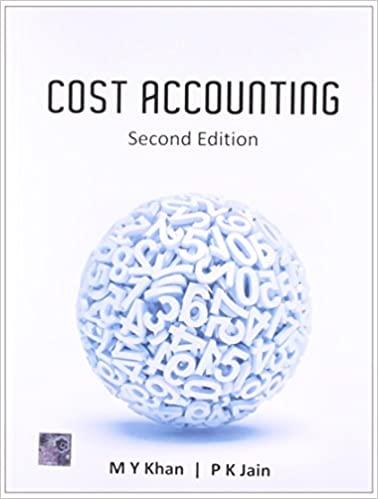Answered step by step
Verified Expert Solution
Question
1 Approved Answer
Variance Analysis using Excel's ABS, IF and Basic Math Functions Patterson, Inc. has provided details of its actual cost data for the month. The Controller
Variance Analysis using Excel's ABS, IF and Basic Math Functions
Patterson, Inc. has provided details of its actual cost data for the month. The Controller has asked you to compute the basic variances and the impact of those variances on unit costs. Use the information included in the Excel Simulation and the Excel functions described below to complete the task.
Cell Reference: Allows you to refer to data from another cell in the worksheet. From the Excel Simulation below, if in a blank cell, D was entered, the formula would output the result from cell D or in this example.
Basic Math functions: Allows you to use the basic math symbols to perform mathematical functions. You can use the following keys: plus sign to addminus sign to subtractasterisk sign to multiply and forward slash to divide From the Excel Simulation below, if in a blank cell was entered, the formula would add the values from those cells and output the result, or in this example. If using the other math symbols the result would output an appropriate answer for its function.
SUM function: Allows you to refer to multiple cells and adds all the values. You can add individual cell references or ranges to utilize this function. From the Excel Simulation below, if in a blank cell SUMDD was entered, the formula would output the result of adding those two separate cells, or in this example. Similarly, if in a blank cell SUMD:D was entered, the formula would output the same result of adding those cells, except they are expressed as a range in the formula, and the result would be in this example.
ABS function: Allows you to return the absolute value of a number or calculation. You can reference any cell to display its absolute value, or surround another formula with the ABS function, to return the final result as an absolute value. From the Excel Simulation below, if in a blank cell you entered ABSFG Excel will first calculate the subtraction of FG that results in Then, the ABS portion of the formula returns the absolute value of the subtraction result, which would be in this example.
IF function: Allows you to test a condition and return a specific value is the result is true and different value if the result is false. The syntax of the IF function is IFtestcondition,valueiftrue,valueiffalse and specific considerations need to be made when using this function. The testcondition argument is an evaluation of the status of a cell, such as if the value of a cell is greater than, less than, or equal to another number or cell. The valueiftrue and valueiffalse arguments will return any specific result for each option, such as another cell reference, a value, or text. Throughout the entire equation, if text is being used in the testcondition, valueiftrue, or valueiffalse arguments then the text itself should be entered in quotations so that Excel will recognize the text as a "string of text" instead of another function. From the Excel Simulation below, if in a blank cell IFF"Total Cost Per Unit is good"," Total Cost Per Unit is bad" was entered, the formula would output the result of the valueiftrue since the testcondition would be result as true, or in this case the text "Total Cost Per Unit is good". Excel processes the IF function by separating it out into separate parts. First the testcondition Excel thinks, find cell F and determine if the value is greater than Once Excel determines if the result of that testcondition is TRUE or FALSE, it will return the valueiftrue or valueiffalse.

Step by Step Solution
There are 3 Steps involved in it
Step: 1

Get Instant Access to Expert-Tailored Solutions
See step-by-step solutions with expert insights and AI powered tools for academic success
Step: 2

Step: 3

Ace Your Homework with AI
Get the answers you need in no time with our AI-driven, step-by-step assistance
Get Started


